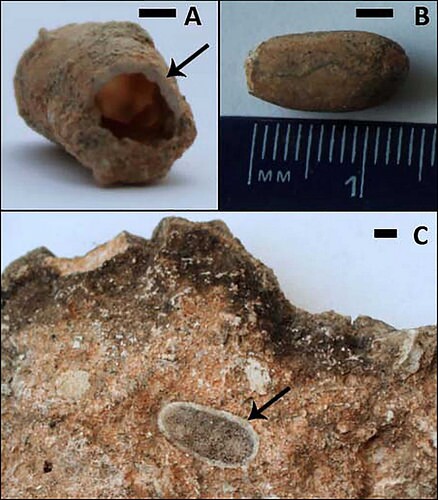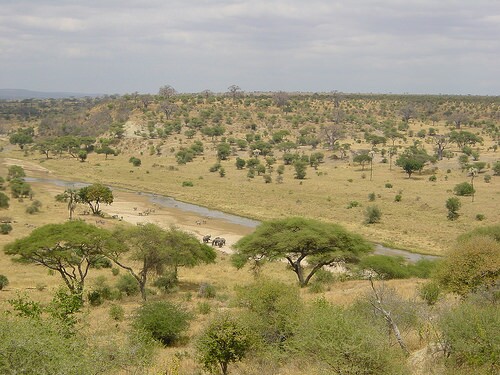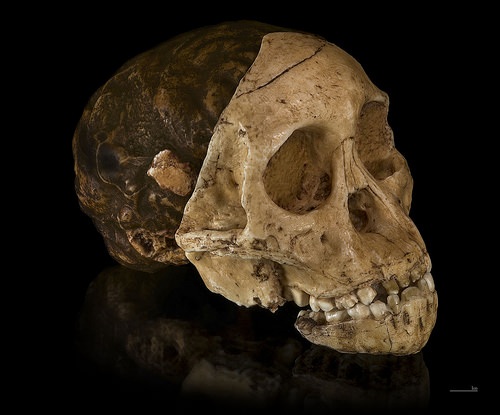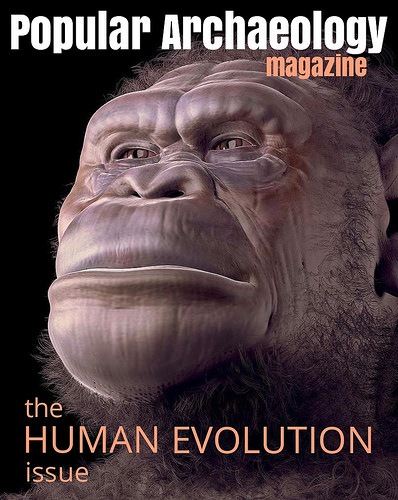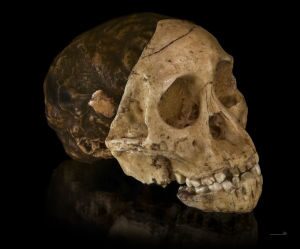
| Analysis of the first fossil bee nest from the Plio-Pleistocene of South Africa suggests that the human ancestor Australopithecus africanus lived in a dry savannah environment, according to a study* published September 28, 2016 in the open-access journal PLOS ONE by Jennifer Parker from University College London, United Kingdom, and colleagues. Little paleoecological information is available for the site in South Africa where the first Au. africanus fossil—the ‘Taung Child’—was discovered. However, insect-related fossils, abundant at the discovery site, can yield insights into the paleoenvironment. Bees, for example, tend to build characteristic nests in characteristic conditions. Parker and colleagues analyzed CT scans of a fossil bee nest that was discovered near the Taung Child site to determine its internal structure and thus the kinds of bees that built it. The fossil nest was exceptionally well preserved, and the structure of its cells and tunnels suggested that it was made by a ground-nesting solitary bee. These bees typically nest on bare, light, dry soil that is exposed to the sun, which bolsters other recent evidence that Au. africanus lived in dry savannahs. Insect-related fossils are common but largely overlooked at sites where human ancestors lived, the researchers said, and their work underscores the contribution such fossils can make to understanding the environments where human ancestors lived. __________________________________ The fossil bee nest. Image credit: Parker, et al (2016) _____________________________________________ Tarangire National Park in Tanzania, East Africa. Today’s African savannahs serve as an analog for the type of environment in which some of our human ancestors lived. Wikimedia Commons ____________________________________________ Endocranium face and mandible of a 2.1 million year old Australopithecus africanus specimen, the “Taung Child”, discovered in South Africa. Didier Descouens, Wikimedia Commons _____________________________________________ “When Raymond Dart published his description of the ‘Taung Child’ in 1925 he profoundly changed our understanding of human evolution,” says study co-author Philip Hopley. “In the 90 years following his discovery, attention of anthropologists has moved to other African sites and specimens, and research at Taung has been hampered by the complex geology and uncertain dating. New research at Taung is helping to reconstruct the environment in which this enigmatic little hominin lived and died.” Source: A PLOS One press release ______________________________________________ ______________________________________________ |
For premium subscribers and those interested in becoming premium subscribers: An anthology of the best feature stories about human evolution as published in Popular Archaeology over the past several years. Richly illustrated, it offers in-depth treatment on some of the most tantalizing discoveries of recent years. It will be updated as new feature articles are published.
________________________________

______________________________________________
Travel and learn with Far Horizons.
____________________________________________
This richly illustrated issue includes the following stories: Recent findings shedding new light on the whereabouts of the remains of Philip of Macedon, father of Alexander the Great; how an archaeologist-sculptor is bringing bones of the dead back to life; archaeologists uncovering town life at the dawn of civilization; an exclusive interview with internationally acclaimed archaeologist James M. Adovasio about what makes the Meadowcroft Rockshelter prominent in the ongoing search for the first Americans; what archaeologists are finding at the site of the ancient city of Gath, the home town of the biblical Philistine giant, Goliath; and how scientists are redrawing the picture of human evolution in Europe. Find it on Amazon.com.

